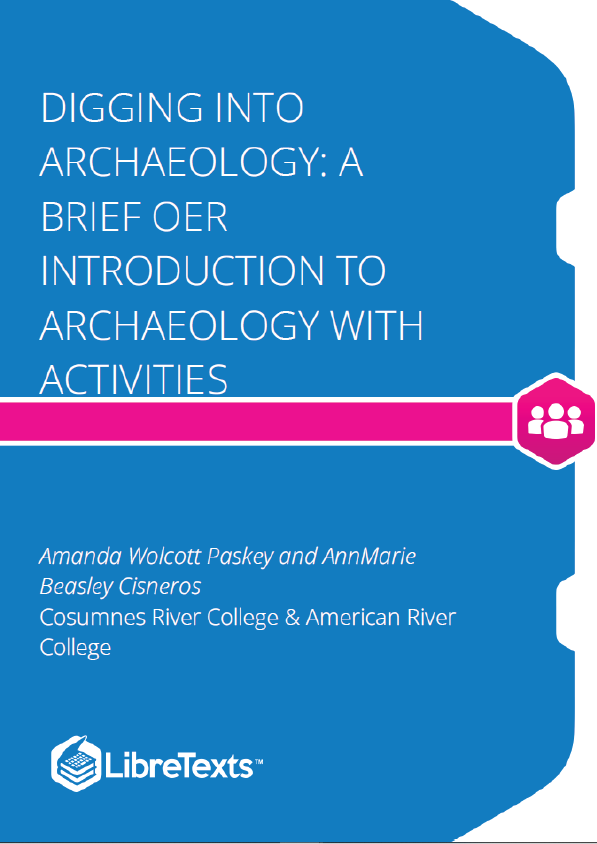This book is intended for use in a variety of introductory archaeology settings, such as in lectures and lab courses. This text can complement an existing traditional text or completely replace a standard text. It can be used for its activities or as a study resource. When we wrote this text, we designed the chapters to be brief, providing concise and to-the-point information. This book is not intended to replace lectures or direct instruction from an instructor; rather, it supports learning in a variety of settings and formats.
From museums, science magazines, television shows, and even films, most of us have had some exposure to archaeology and have become familiar with some of the world’s most famous archaeological discoveries. Perhaps you chose this course because you are interested in Ancient Egypt, Greece, or Stonehenge. However, have you ever met an archaeologist in person? We commonly deal with many professions we see in the media, such as doctors, lawyers, police officers, firefighters, and teachers, but rarely have personal contact with archaeologists. As a result, we mostly rely on stereotypes portrayed in the media to understand archaeologists and the work they do.
First surprise? Archaeology is much more than digging! It is a sub-discipline of the larger field of anthropology, which is the study of humankind. Anthropology studies all humans, in all times, at all places and is divided into four more-manageable subdisciplines: biological anthropology, cultural anthropology, linguistic anthropology, and archaeology. Biological anthropology studies humans from a biological perspective. This includes biological variation, primatology (studying primates such as lemurs, monkeys, and apes), human fossils, and evolution. Cultural anthropology, in contrast, studies humans from a cultural perspective. Culture is the learned behaviors of a group of people and it includes many, many elements—the languages they speak, the foods they eat, how they build their homes, what they believe, their customs, and more. Cultural anthropology observes and documents these practices and compares the cultures of various groups. Cultural anthropologists collect data and study cultures through participant observation, which involves living with, observing, and asking questions of the people they study. Linguistics is a cultural characteristic, and linguistic anthropology examines the linguistic aspects of human cultures in greater detail, including structural linguistics (patterns in sound, structure, and grammar), historical linguistics (how languages change and develop over time), and sociolinguistics (social aspects of language). Archaeology also considers aspects of culture and asks similar questions but uses different data. Rather than relying on observations of living participants, archaeology studies material culture—items people made, modified, and used in the past to understand the culture of our ancestors.
Applied anthropology is sometimes considered the fifth sub-discipline. It involves applying theoretical elements of anthropology to real-world problems. Probably the most famous applied anthropology is forensic anthropology, popularized in television and film. Forensic anthropologists apply the principles and theory of biological anthropology to the identification of human skeletons in the context of crimes. Archaeologists who conduct surveys and excavations in the setting of construction projects are applying the principles and theory of archaeology to this real-world setting, another variety of applied anthropology.











